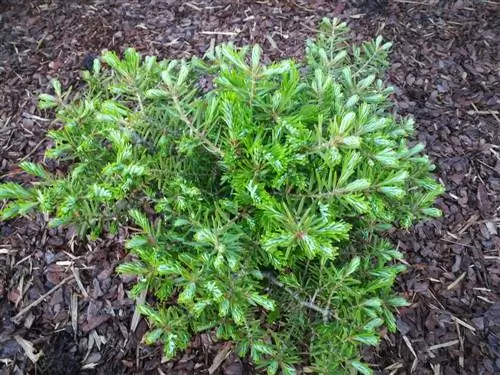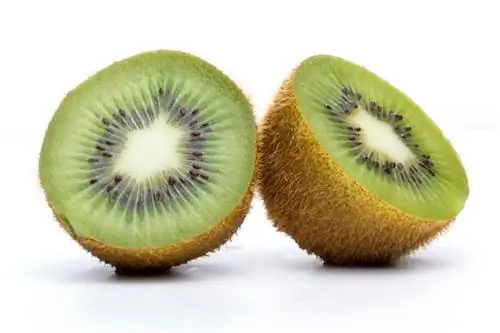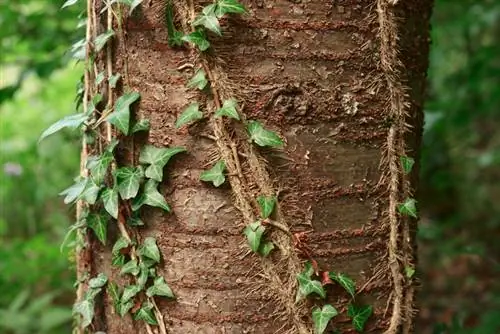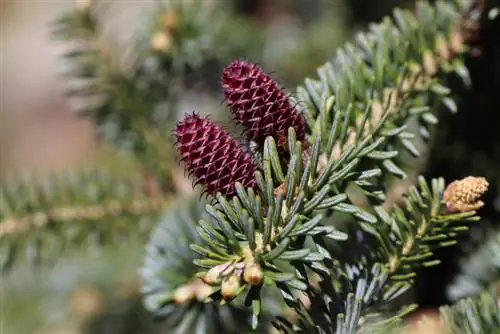- Author admin [email protected].
- Public 2023-12-16 16:46.
- Last modified 2025-01-23 11:22.
Richly colored Korean firs speak the language of good care. This is due to their root system, which does its work day after day far from our eyes. How exactly does the root system develop in the soil? And can we help ensure that it positions itself in the best possible way.

What are the roots of the Korean fir like?
The roots of the Korean fir are finely branched and flat, are located directly below the surface of the earth and can reach deeper if necessary. For optimal root development, they need loose, well-drained and rather sandy soil, while heavy, compacted soil should be avoided.
Korean fir has many fine shallow roots
The Korean fir forms a finely branched root system that generally does not reach very deep. It can be found just below the earth's surface. Since individual trees can also form deeper roots if necessary, this is called a heart root.
Soil quality for good root formation
So that the fine roots can develop unhindered, the soil must not slow them down. When planting this fir, pay attention to the following aspects:
- loose and well-drained soil is ideal
- more sandy than clay
- heavy, compacted soil should be avoided
- alternatively improve with the addition of large areas of sand
Extensive roots
The roots of the Korean fir keep pace with the above-ground growth and spread over a wide area. This allows the conifer to supply itself with nutrients and water independently. Fertilizing with a special fir fertilizer (€9.00 on Amazon) is only recommended for poor soils.
A tree with so many shallow roots can suffer from water shortages during long dry periods. This can lead to the needles changing color or even loss of needles, which is easily mistaken for an illness. On hot days, support the root system with the hose. The root area should never dry out completely.
Danger to paved surfaces and pipes
A root system that spreads so widely can cause damage that no one is aware of when planting. The roots located just below the surface of the earth can push up paving slabs if the planting distance is not correct. The extent to which pipes can be affected depends on how deep they run.
Danger of frost in the pot
The Korean fir family offers many dwarf forms with a dense, beautifully shaped crown. They can root in the garden, but are also often used as container plants. Although the conifer is hardy, the roots can freeze more easily in a container. They need protection or have to overwinter frost-free.






